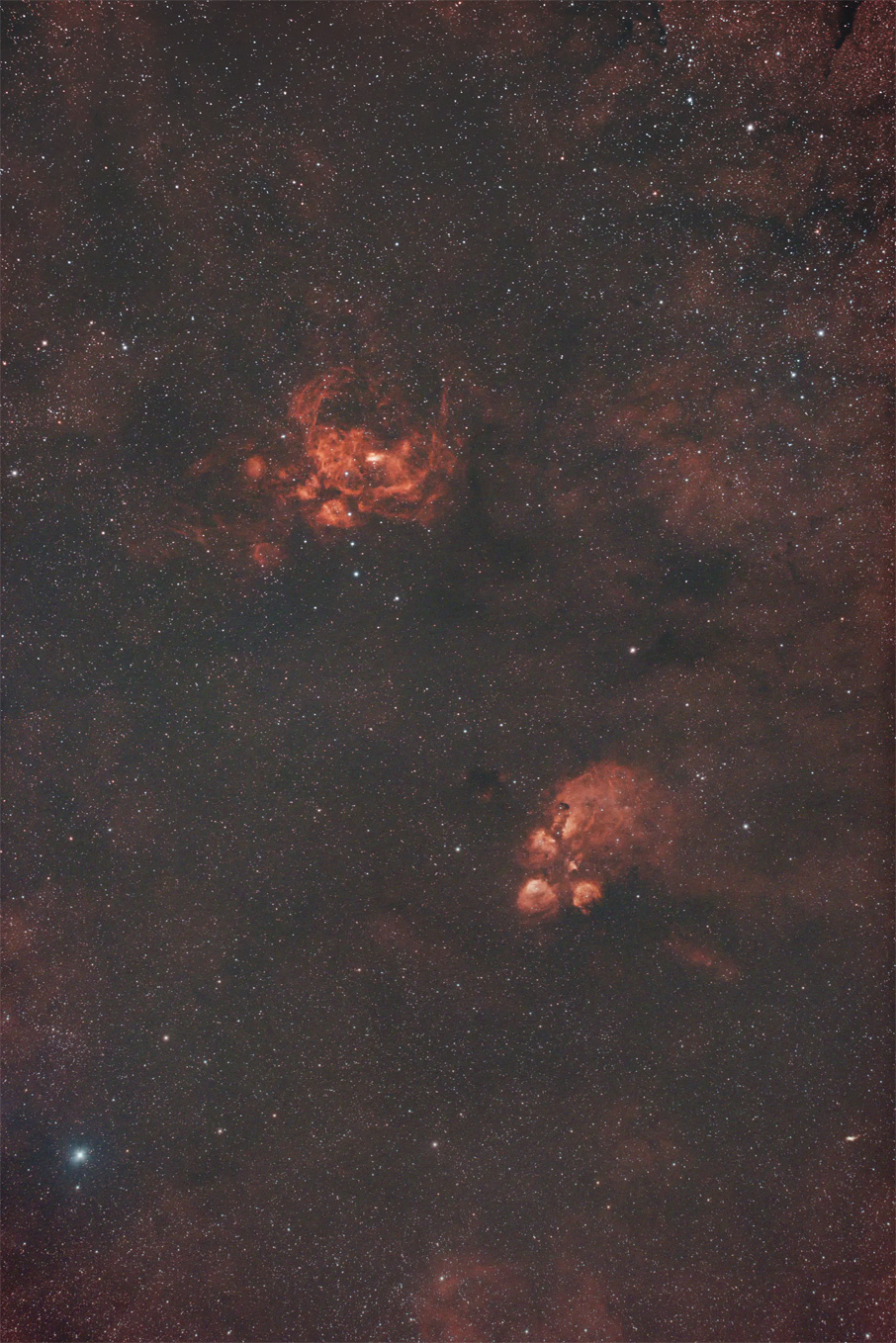| NGC6334 / Diffused Nebula, type E |
|---|
| R.A. | 17h 20m 30.0s (2000.0) |
|---|
| Dec. | -35°43' 00" (2000.0) |
|---|
| Apparent Size | 46.5×22.0' |
|---|
| Real Size | 74×35 light yrs. |
|---|
| Magnitude | - |
|---|
| Distance | 5500 light yrs. |
|---|
| Other IDs | Sh2-8, RCW127
Gum 64 |
|---|
|
| NGC6357 / Diffused Nebula, type E |
|---|
| R.A. | 17h 24m 35.9s (2000.0) |
|---|
| Dec. | -34°09' 59" (2000.0) |
|---|
| Apparent Size | 31.8×30.0' |
|---|
| Real Size | 57×53 light yrs. |
|---|
| Magnitude | - |
|---|
| Distance | 6200 light yrs. |
|---|
| Other IDs | Sh2-11, RCW131
Gum 66 |
|---|
|
This image shows you two vast hydrogen gaseous nebulae spread around the tail of Scorpius.
You can gaze at two noticeable open clusters of M6 and M7 being next to the nebulae in east, one of the extraordinary photogenic celestial fields.
But the nebulae has a median transit with an altitude of lower than 20 degrees at Tokyo, it's hard to photograph the nebula in good condition at Japan.
NGC6334, the Cat's paw Nebula in lower right, is a reddish diffused nebula with a size of about 20 arc minutes.
It consists of several segments of three round red lights and a dimmed vast region, only appears clearly on long-exposed photos.
The unique-shape has given a nickname of "Cat's paw nebula", and the nebula has another nickname of "The Telescope Goldfish Nebula" in Japan.
It looks like a kind of goldfish with its eyes sticked out.
NGC6357 in upper left has an apparent size of about 50 arc minutes, and is often called "The Cluster Amaryllis Nebula" at Japan (in Japanese "Higan-bana" Nebula),
because the shape of it looks like a huge reddish flower.
To close-up of NGC6334
To close-up of NGC6357
|

